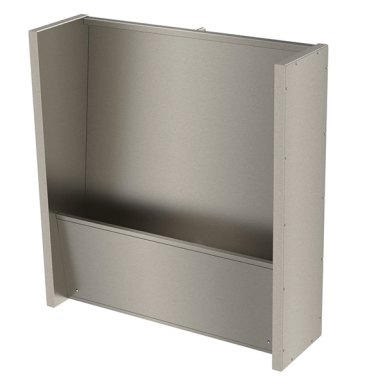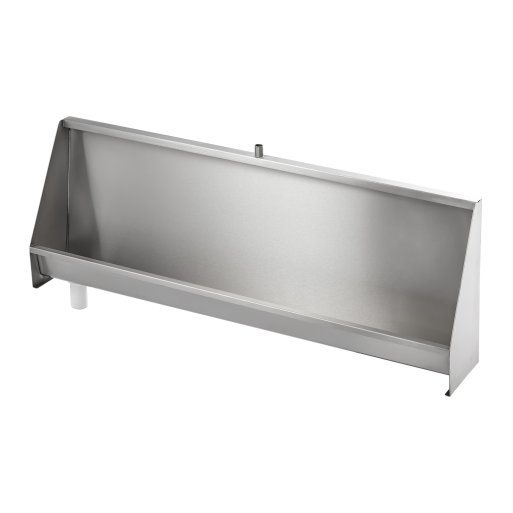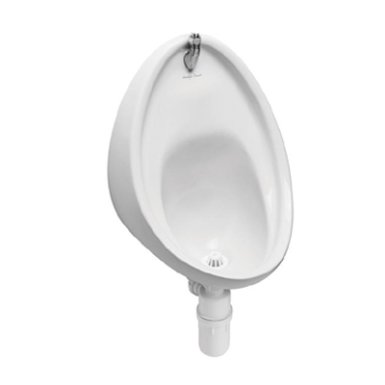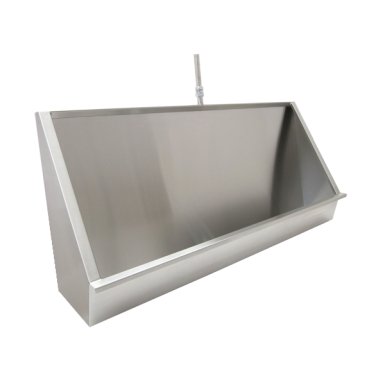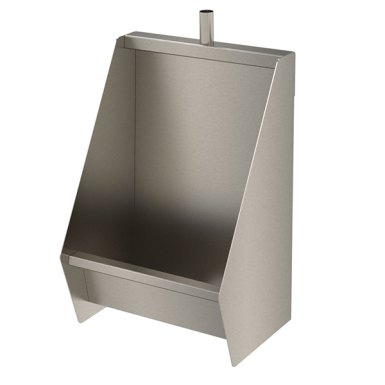How To Choose The Right Urinal For Your Venue Or Workplace
Buyer’s Guide: Choosing the Right Urinal
If you’re reading this guide, you’ve probably already decided to purchase a urinal; excellent choice! But before you take the plunge, it’s worth spending a little figuring out exactly which type of urinal is right for you. In this guide, we’ll discuss the different kinds of urinal that are available on the market today - but before we do that, let’s take a look at some of the different materials that are used to construct urinals and their respective benefits.
Material world
When it comes to urinals, there are two basic materials on offer: stainless steel, and vitreous china. As you’ll find out below, each material comes with its own set of unique characteristics, advantages and drawbacks.
![]()
![]()
Stainless steel
Stainless steel is so called because it is highly resistant to corrosion, thanks to a thin surface layer of chromium oxide that protects the underlying metal from exposure to oxygen. Stainless steel is renowned for its durability and toughness; these same properties make it both excellent value for money, and highly resistant to vandalism.
Stainless steel is also very simple to clean and maintain; for most purposes, all you’ll need is water and ordinary household washing up liquid. However, you should avoid using abrasive cleaning materials like scourers, as these can scrape away the chromium oxide layer and make the urinal susceptible to rusting.
The ‘industrial’ look of stainless steel urinals make them ideally suited to locations with a more more modern, minimalist aesthetic, or those where vandalism is a possibility, such as public toilets and schools. Stainless steel is cheaper than vitreous china, but many people find vitreous china more aesthetically pleasing.
Vitreous china
Vitreous china is a coating that is applied to porcelain to make it tougher and more waterproof. This coating also gives the material its unique glassy shine - in fact, the word ‘vitreous’ means ‘glass-like’.
Vitreous china’s hardness makes it ideal for use in the construction of urinals, although the fact that it can shatter means that it is less vandal-resistant than stainless steel. It is also more prone to cracks and chips. Unlike stainless steel, there is no risk of rusting with a vitreous china urinal.
Vitreous china urinals have a timeless, classic aesthetic; this makes them at home in locations that have a more traditional or retro feel.
![]()
Urinal types
Although there are many different brands and models of urinal, there are only two basic types: trough urinals and bowl urinals.
Trough urinals
Most trough urinals are made from stainless steel. They are much cheaper than bowl urinals because, unlike bowl urinals, they can accommodate multiple users simultaneously. They also only require a single waste pipe, making them cheaper and simpler to install. However, the tradeoff is that they do not offer the same levels of privacy as bowl urinals. Many people would also argue that they are less aesthetically pleasing.
Trough urinals are best suited to high-traffic venues and those with multiple washrooms, which would make individual bowls prohibitively expensive to install, such as office buildings. Our standard stainless steel trough urinal can be supplied in any length up to 3300mm, and also comes with free delivery and a matching stainless steel cistern.
![]()
Bowl urinals
Bowl urinals tend to be made from vitreous china, although a number of stainless steel models are also available. Bowl urinals offer far more privacy than troughs - but because they only accommodate one user at a time and essentially require the same amount of plumbing as a four-person trough urinal, they are a little less cost-effective.
We would recommend bowl urinals for venues with fewer users and those with single washrooms, such as cafes and restaurants. Bowl urinals were recommended by the Department for Education and Skills as part of their Toilets in Schools Guidance because they afford more privacy than troughs. Privacy can be enhanced still further via the use of divider screens, which are available in stainless steel.
Next steps
Now that you’ve decided on a urinal, it’s time to plumb it in. Installing a urinal can be a little tricky, but with the right know-how, anyone can do it. Visit our installer’s guide to urinals to find out about cisterns, mounting options, rules and regulations, and more.
-
Posted by Paul Thorn
20th March 2024

 UK's Largest Stockholding
UK's Largest Stockholding Next Day Delivery Available
Next Day Delivery Available UK Mainland Delivery from £15
UK Mainland Delivery from £15 Minimum 1 Year Guarantee
Minimum 1 Year Guarantee